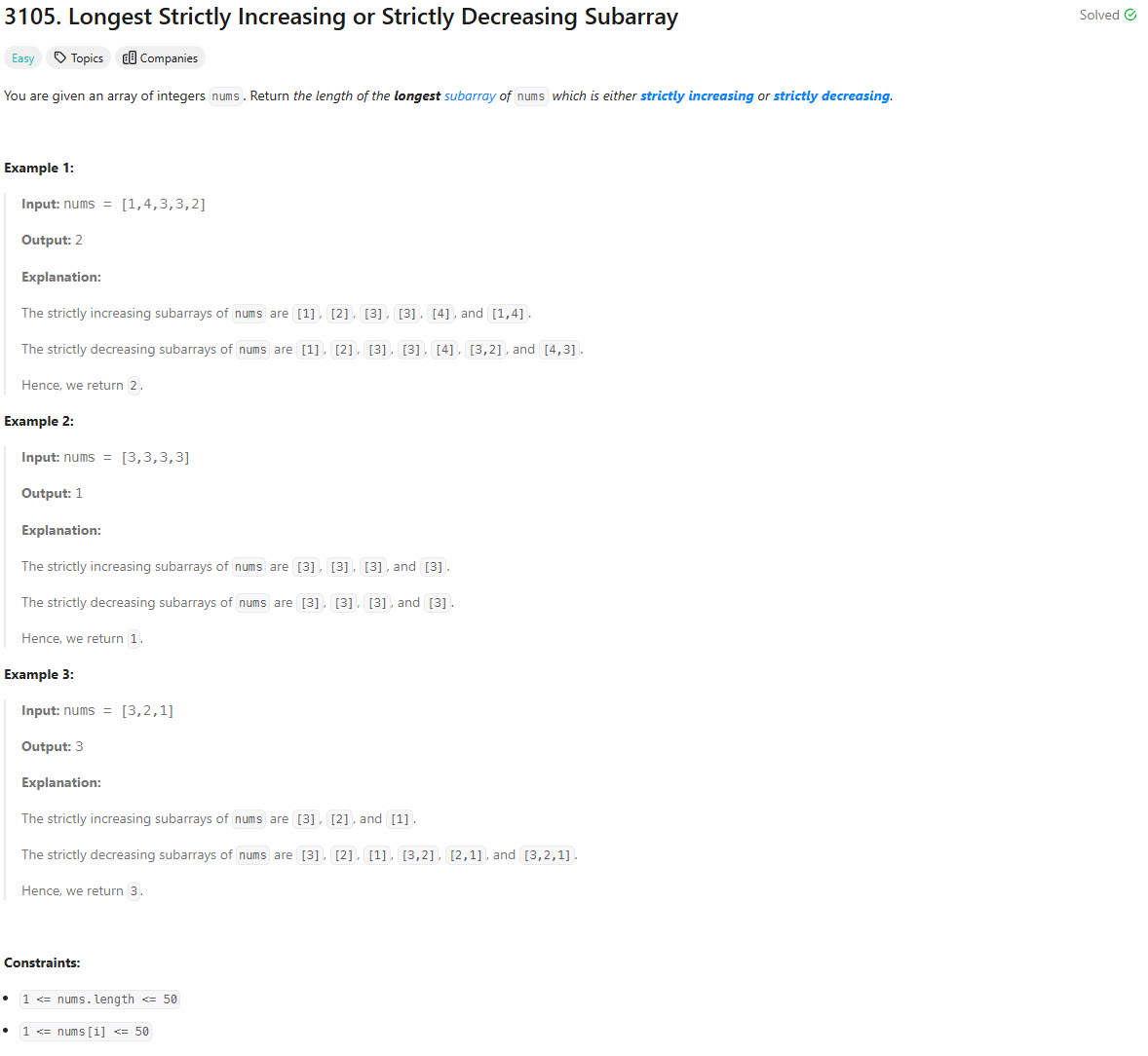Problem Statement

Sliding Window [Accepted]
class Solution:
def longestMonotonicSubarray(self, nums: List[int]) -> int:
start = 0
N = len(nums)
res = 0
for end in range(N):
if nums[end - 1] >= nums[end]:
start = end
res = max(res, end - start + 1)
start = 0
for end in range(N):
if nums[end - 1] <= nums[end]:
start = end
res = max(res, end - start + 1)
return res
Editorial
Brute Force
class Solution:
def longestMonotonicSubarray(self, nums: list[int]) -> int:
max_length = 0
# Find longest strictly increasing subarray
for start in range(len(nums)):
curr_length = 1
for pos in range(start + 1, len(nums)):
# Extend subarray if next element is larger
if nums[pos] > nums[pos - 1]:
curr_length += 1
else:
# Break if sequence is not increasing anymore
break
max_length = max(max_length, curr_length)
# Find longest strictly decreasing subarray
for start in range(len(nums)):
curr_length = 1
for pos in range(start + 1, len(nums)):
# Extend subarray if next element is smaller
if nums[pos] < nums[pos - 1]:
curr_length += 1
else:
# Break if sequence is not decreasing anymore
break
max_length = max(max_length, curr_length)
return max_length # Return the longer of increasing or decreasing sequences
Approach 2: Single Iteration
class Solution:
def longestMonotonicSubarray(self, nums: list[int]) -> int:
# Track current lengths of increasing and decreasing sequences
inc_length = dec_length = max_length = 1
# Iterate through array comparing adjacent elements
for pos in range(len(nums) - 1):
if nums[pos + 1] > nums[pos]:
# If next element is larger, extend increasing sequence
inc_length += 1
dec_length = 1 # Reset decreasing sequence
elif nums[pos + 1] < nums[pos]:
# If next element is smaller, extend decreasing sequence
dec_length += 1
inc_length = 1 # Reset increasing sequence
else:
# If elements are equal, reset both sequences
inc_length = dec_length = 1
# Update max length considering both sequences
max_length = max(max_length, inc_length, dec_length)
return max_length
